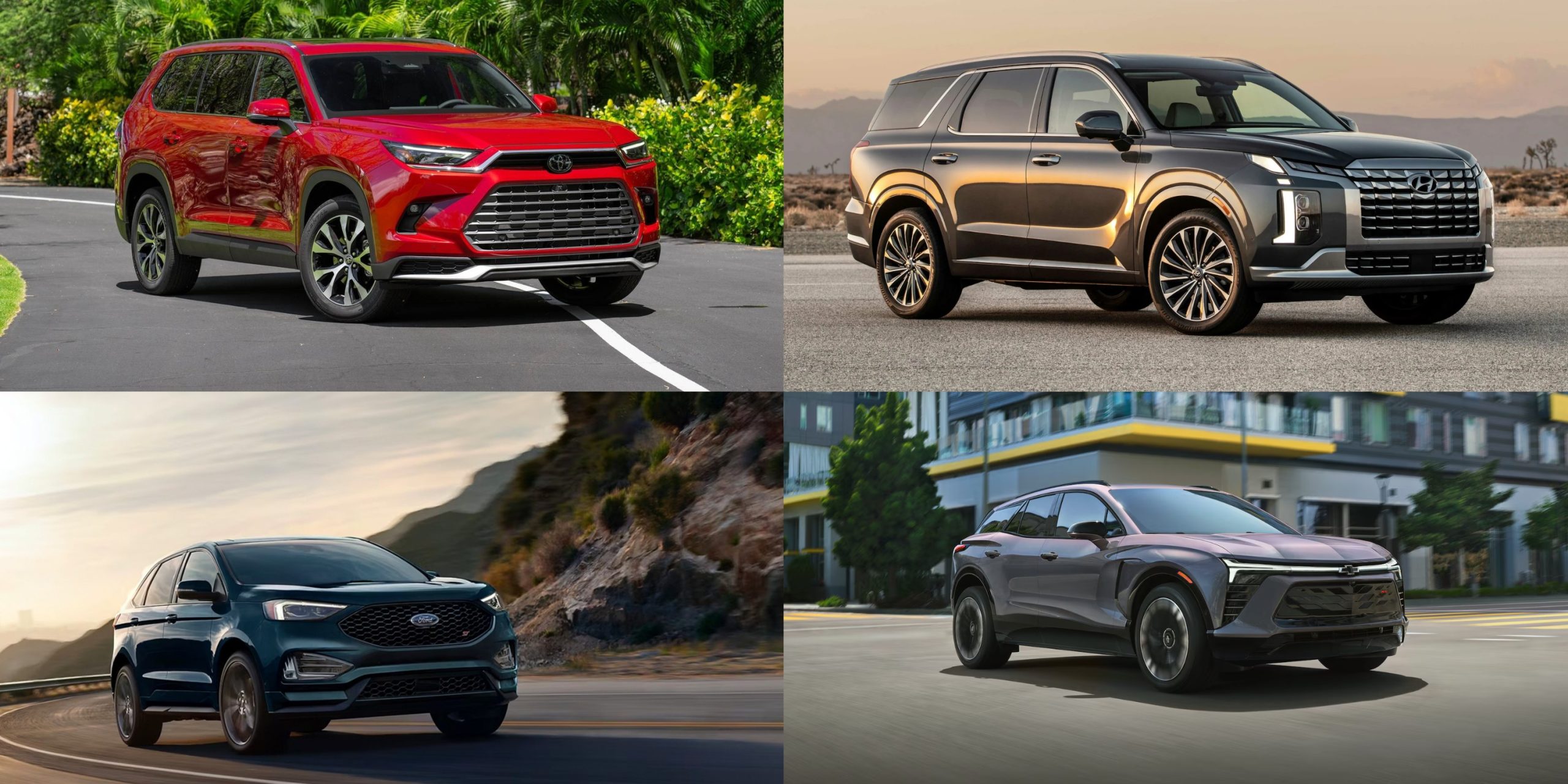When it comes to SUVs, interior space is often a major selling point. These vehicles are designed with the promise of roominess—whether it’s for hauling passengers, loading up for road trips, or fitting an active lifestyle’s worth of gear. But not all SUVs are created equal.
Some make the most of every square inch, turning seemingly ordinary cabins into masterclasses in practical design. Others, however, fall victim to bad layout choices, bulky design elements, or wasted space that leaves them feeling strangely hollow. It’s a reminder that size on paper doesn’t always translate to real-world usability.
Smart space usage goes beyond sheer volume. It’s about functionality, flexibility, and how well a vehicle accommodates real people doing real things. Clever seat configurations, hidden compartments, flat-folding mechanisms, and thoughtful cargo designs can turn an SUV from decent to exceptional. The best SUVs know how to work with their space, not just fill it.
They give you options: to store more, to seat more, to do more. On the flip side, some SUVs might look big and bold but disappoint. Their interiors feel cramped, trunk areas are awkwardly shaped, or their features just don’t live up to expectations.
This list aims to spotlight both ends of the spectrum. First, we’ll explore five SUVs that make brilliant use of their room—vehicles that turn their cabins into multi-purpose, high-function spaces.
Then we’ll take a look at five that look great on the outside but feel disappointingly empty or impractical inside. Whether you’re hunting for a family car, an adventure companion, or just something roomy for day-to-day life, knowing how an SUV really uses its space can be the difference between buyer’s joy and buyer’s remorse.
Also read: 10 Reliable Cars That Are Actually Fun to Drive for Daily Commuting in 2025
5 SUVs That Make Smart Use of Room
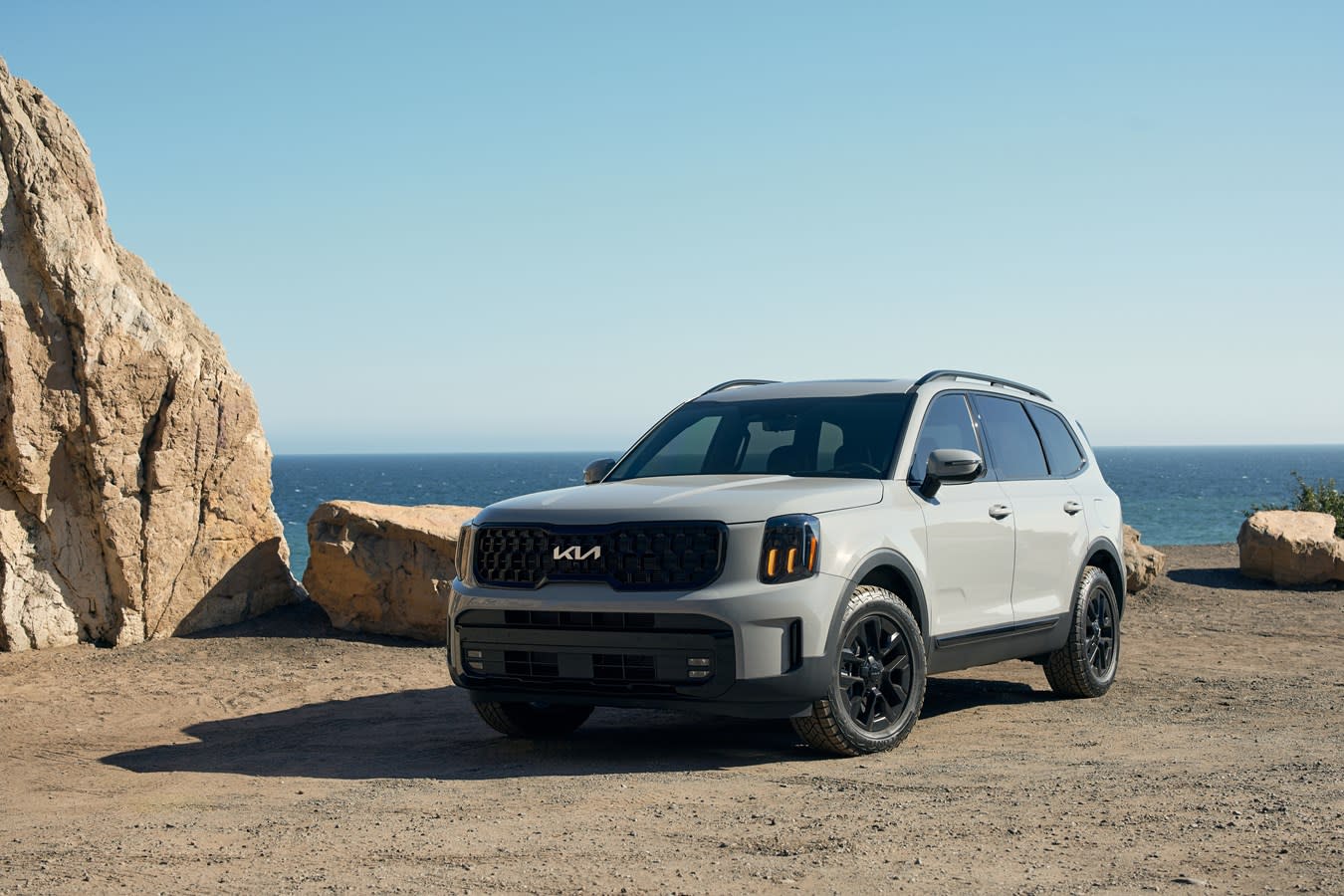
1. Kia Telluride
The Kia Telluride has become one of the most talked-about midsize SUVs in recent years—and for good reason. Beyond its upscale styling and refined drive, it offers an impressively smart use of interior space.
Whether you’re in the front seat, the third row, or loading the cargo area, there’s a clear sense that Kia designed this SUV with real families and real functionality in mind. It doesn’t just have space—it uses it wisely.
One of the standout features is the third-row accessibility. Unlike many competitors, the Telluride provides ample legroom even in the back, making it usable for adults, not just kids.
The second-row seats slide forward with ease, and there’s enough width in the cabin to comfortably seat three across. Cargo space behind the third row is also generous compared to many rivals, and the load floor is low enough to make lifting heavy items much easier.
When all seats are folded flat, the Telluride transforms into a cargo-hauling beast. Storage throughout the cabin is excellent, too.
The center console is deep and comes with multiple charging ports and storage trays. The door pockets are wide enough for large bottles, and even the third row has cupholders and device holders.
Everything feels purposeful. Kia didn’t just go for a big interior—they made sure every inch of it counts. It’s a textbook example of what modern SUV buyers are looking for.
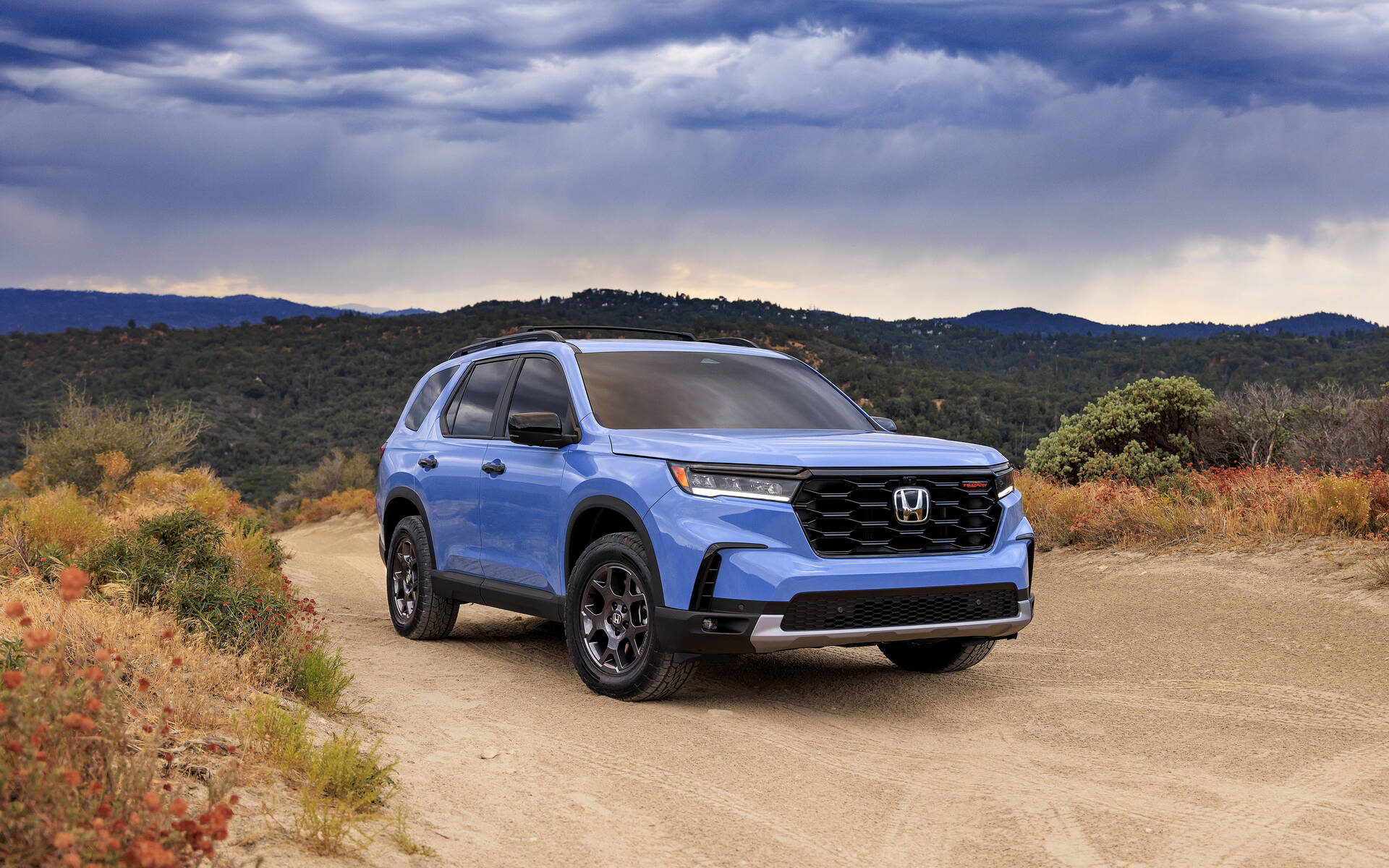
2. Honda Pilot
The redesigned Honda Pilot brings a thoughtful blend of comfort and flexibility that makes it one of the smartest SUVs on the market in terms of room use. Honda has always been known for its interior packaging, and the Pilot pushes that reputation further with its reimagined third row, flexible middle seat setup, and tons of storage options throughout the cabin.
A particularly cool feature is the removable second-row middle seat in some trims, which can be stowed under the rear cargo floor. That’s right—you don’t have to leave it in your garage or basement. This allows you to switch between an 8-passenger and 7-passenger layout on the fly.
The third row, often a weak point in midsize SUVs, is genuinely adult-friendly, and the wide-opening rear doors make entry and exit simple. Folding the seats down is quick and intuitive, and when you do, you get a large, flat cargo space perfect for road trips or hauling furniture.
Beyond seating, the Pilot offers generous in-cabin storage. The center console has enough space for large bags or tablet devices, and there are multiple cupholders, pockets, and clever bins throughout the cabin.
You’ll also find an underfloor cargo area in the trunk that adds a hidden layer of utility. This is the kind of thoughtful layout that’s perfect for busy families, travelers, or anyone who values space that works with them.
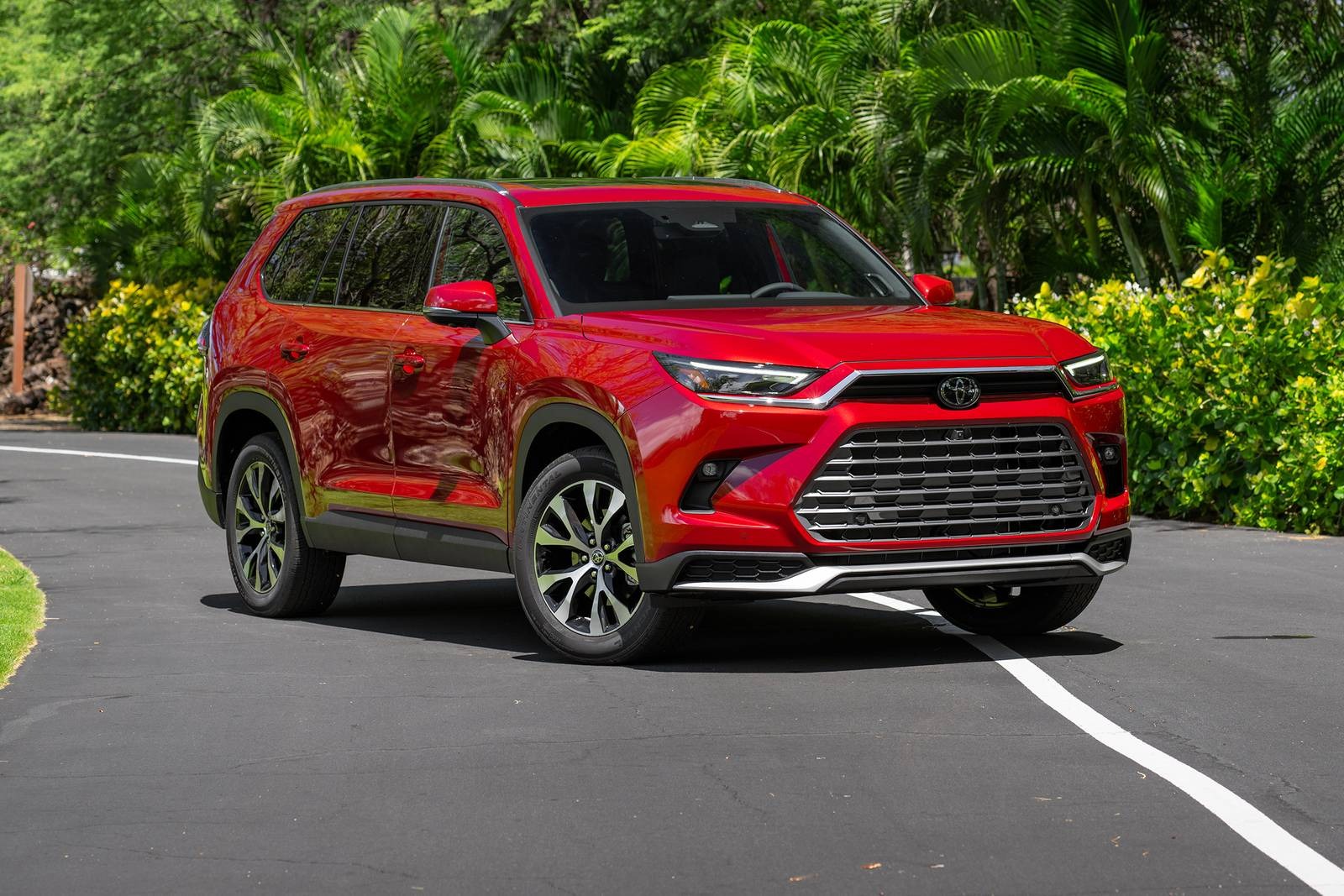
3. Toyota Grand Highlander
Toyota’s Grand Highlander fills the gap between the standard Highlander and the full-size Sequoia, and it does so with impressive attention to interior usability. It’s not just longer—it’s more practical in every dimension. Toyota focused on maximizing passenger and cargo flexibility without overcomplicating the design, and the results are noticeable from the moment you open the doors.
The third row is where this SUV truly shines. It’s spacious enough for adults, with plenty of foot room and easy access via wide second-row openings. Unlike some rivals, the third row doesn’t feel like an afterthought—it’s fully integrated into the cabin experience.
And with all seats upright, you still get usable cargo space in the back, which is not always the case in this class. Folding down the rear rows is quick and easy, creating a nearly flat floor with ample room for large loads.
The Grand Highlander also offers multiple smart storage touches. There’s a deep center console with a sliding tray, oversized door pockets, and clever cubbies throughout the cabin. Even the third row gets USB ports and cupholders, which is a win for families. Toyota made sure that this SUV doesn’t just look big—it actually functions like one, too.

4. Hyundai Palisade
The Hyundai Palisade delivers a premium feel without the premium price tag, and part of that luxury experience is the smart use of space. This three-row SUV is built with a thoughtful interior design that caters to both passengers and drivers. Hyundai didn’t just prioritize aesthetics—they made sure the Palisade was useful, too.
Every row of seating is comfortable and accessible. The second-row captain’s chairs are spacious, and the third row offers enough room for adults, especially for short to mid-length trips. Accessing that third row is easy, thanks to a one-touch slide feature on the second-row seats.
With all the seats up, cargo space remains usable, and when folded flat, the Palisade offers a huge and well-shaped cargo area. The power liftgate and underfloor storage tray add to the ease of use.
Inside the cabin, you’ll find a storage-focused layout with multiple USB ports, a wireless charging pad, large cupholders, and deep bins. The front console even has a pass-through section under the gear selector area—perfect for small bags or purses. The Palisade shows that you don’t have to spend top dollar to get a practical, roomy SUV that caters to real-life needs.
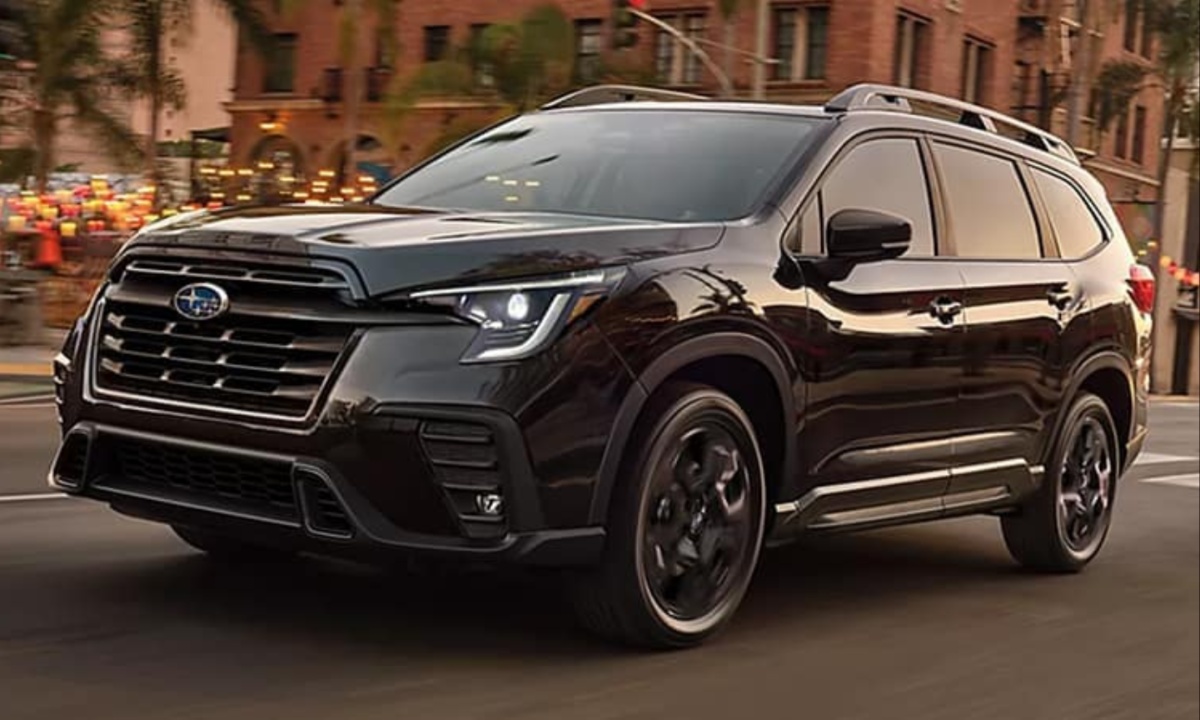
5. Subaru Ascent
The Subaru Ascent doesn’t always get the spotlight, but it deserves attention for how it uses space. This three-row SUV has one of the most efficient layouts in its class, maximizing comfort and storage without getting bulky or awkward. Subaru has packed this vehicle with clever features that make life easier for families and gear-heavy drivers.
The Ascent’s third row is accessible and relatively spacious, especially when the second-row captain’s chairs are in play. Even with all seats in use, you still have a decent amount of cargo room behind the third row.
Folding down the rear rows reveals a wide and flat cargo area, ideal for long trips or bulk shopping. The power liftgate and available roof rails only add to the Ascent’s versatility.
Interior storage is another strong point. The front console has dual storage areas, there are large bottle holders in the doors, and the cabin is filled with small trays and bins. Subaru even includes cargo tie-down points and a rubberized cargo floor in certain trims, making it easier to manage messy or heavy gear. The Ascent may not be flashy, but it’s deeply functional.
5 SUVs That Feel Empty
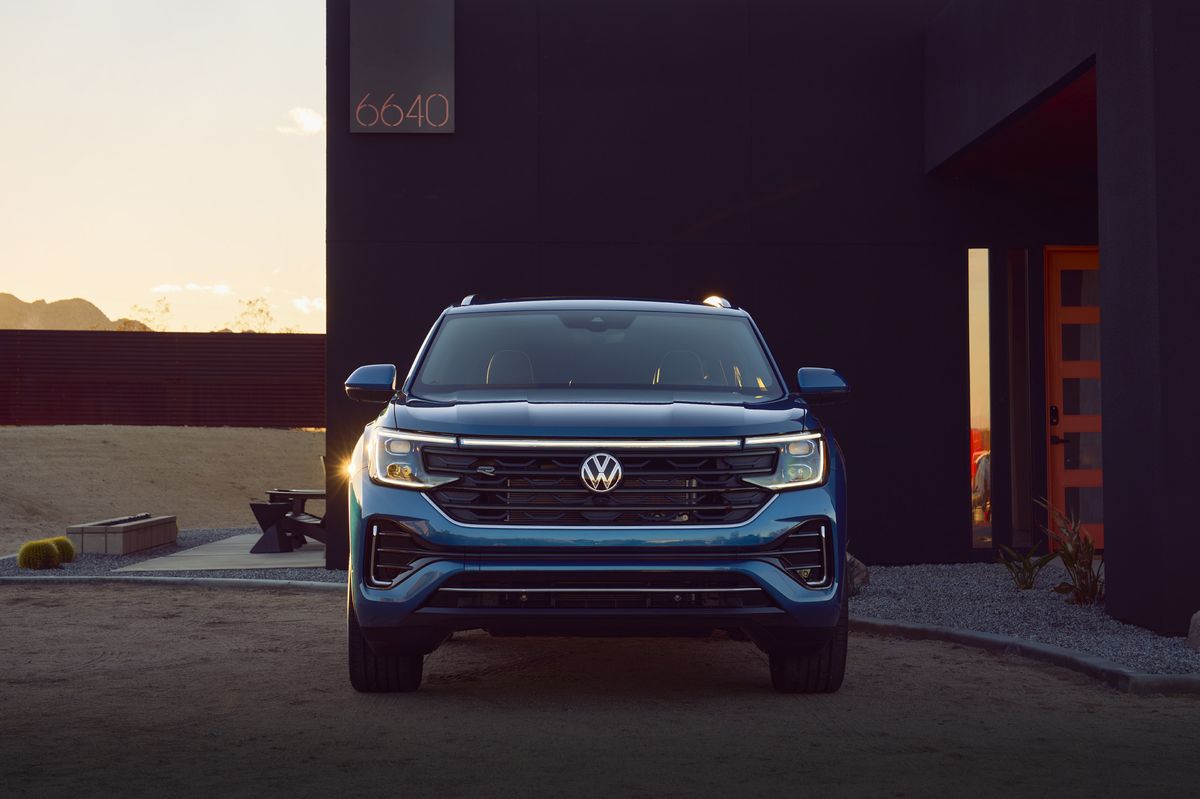
1. Volkswagen Atlas Cross Sport
The Volkswagen Atlas Cross Sport looks like a spacious midsize SUV from the outside, but step inside and you may be surprised at how underutilized that space feels. Despite having a long and wide footprint, the cabin can feel oddly sparse, especially when it comes to cargo and rear-seat room compared to its competitors.
The sloping rear roofline compromises both headroom and trunk space. While the rear cargo area is wide, it’s not as tall or deep as you’d expect, and the angle of the tailgate cuts into usable volume. Fold down the rear seats, and while you do get a flat floor, the layout feels less generous than it should be for a vehicle of its size. There’s also a noticeable lack of hidden or creative storage options.
Inside the cabin, the minimalistic design feels sleek, but it lacks everyday practicality. The center console is shallower than expected, and the door pockets are small.
Even the glove box feels tight. Volkswagen went for a clean look, but in doing so, they missed opportunities to make the space functional, especially for families or road trip lovers who need to store more than just the basics.
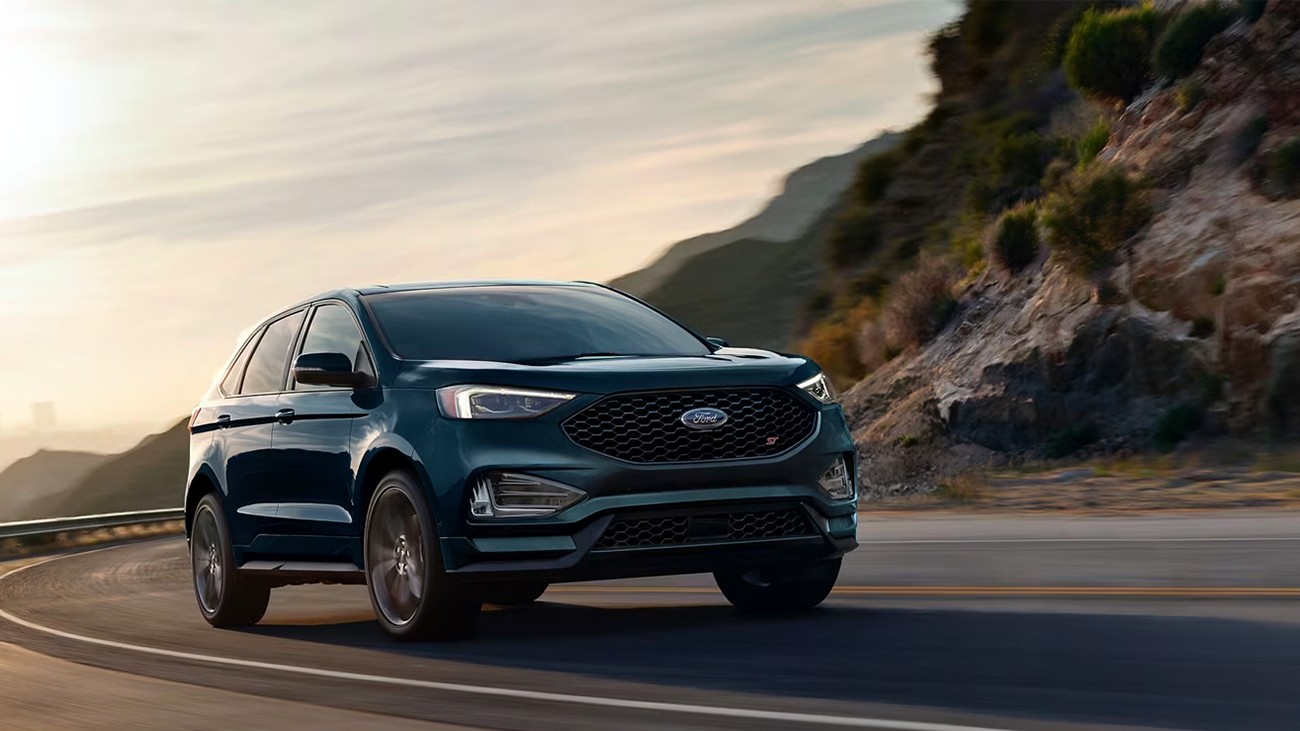
2. Ford Edge
The Ford Edge sits in the midsize SUV segment and markets itself as a stylish, spacious crossover. While it certainly looks roomy and offers a decent ride, a closer look reveals it doesn’t make the most of its interior real estate.
It’s a case where the exterior size raises expectations that the interior layout doesn’t quite fulfill. For a vehicle this size, the rear seats and cargo area feel underwhelming compared to what rivals offer.
Despite a relatively wide stance, the rear seats feel flatter and less sculpted than competitors’, with a center hump that makes the back seat uncomfortable for three passengers on longer trips. There’s also limited small-item storage for rear passengers—no seatback organizers, small door pockets, and a basic center armrest.
It’s a back seat that feels like it was added to meet expectations, not exceed them. The cargo area is decently wide, but the lift-over height is higher than ideal, and the floor isn’t fully flat when the seats are down, reducing practical storage volume.
In the front, the Edge lacks smart storage features that would make it easier to live with. The center console is fairly deep but not particularly well-divided, making it hard to keep things organized.
Door pockets are small, and the layout of the infotainment and gear area leaves little room for extra trays or drop zones for daily essentials. It’s a functional SUV, but for its footprint, the Edge feels like a missed opportunity for space optimization.

3. Nissan Murano
The Nissan Murano prioritizes comfort and smooth driving over utility, and that’s evident the moment you start trying to store things inside. With its curvy, coupe-like design and heavily stylized interior, it sacrifices practical space in favor of aesthetics. While the seats are plush and the ride is quiet, the Murano’s interior doesn’t feel as flexible or functional as many of its competitors.
The rear cargo area is a prime example. Though it appears roomy at a glance, the sloping rear hatch limits how much vertical cargo you can load. Tall boxes or stacked luggage often hit the roof before fitting.
The lift-over height is also higher than average, and while the rear seats do fold, they don’t create a perfectly flat load surface. There are no underfloor compartments or hidden bins to help organize smaller items, making the space feel less useful than it could be.
The interior design in the front continues this trend. There’s a wide console, but not much of it is dedicated to usable storage. Door bins are slim, and the glovebox is smaller than expected. Even though the Murano features a visually appealing cabin, it simply doesn’t offer the smart touches, like tray storage, sliding compartments, or rear USB organization, that today’s SUV buyers expect. It’s more of a lounge on wheels than a cargo-capable utility vehicle.

4. Chevrolet Blazer
The Chevrolet Blazer brings sporty design and aggressive styling to the midsize SUV game, but with that bold look comes a price: practicality. The interior feels surprisingly tight and underutilized for a vehicle in this category, and it leaves you wanting more when it comes to both storage options and usable room. It’s a crossover that looks like it should be sporty and functional, but leans too far toward form over function.
One of the main issues is rear seat space. While there’s technically enough legroom, the sloping roofline cuts into headroom for taller passengers, making long trips uncomfortable. The rear cargo space is decent, but again, the slant of the roof limits tall item loading.
Folding the seats down doesn’t result in a completely flat floor, and there’s no clever underfloor storage or tiered shelving system to make up for the lost utility. Compared to competitors like the Honda Passport or Hyundai Santa Fe, the Blazer feels one step behind.
The center console is designed with sporty aesthetics, but it’s not especially practical. It’s on the narrower side, with limited compartments for organizing essentials like cables, wallets, or sunglasses. Door pockets are tight, and there’s a general lack of smaller bins or cubbies throughout the cabin.
The vibe is sleek, but Chevy could have integrated smarter storage without compromising the design. In trying to be a sporty standout, the Blazer forgets what makes an SUV truly useful.
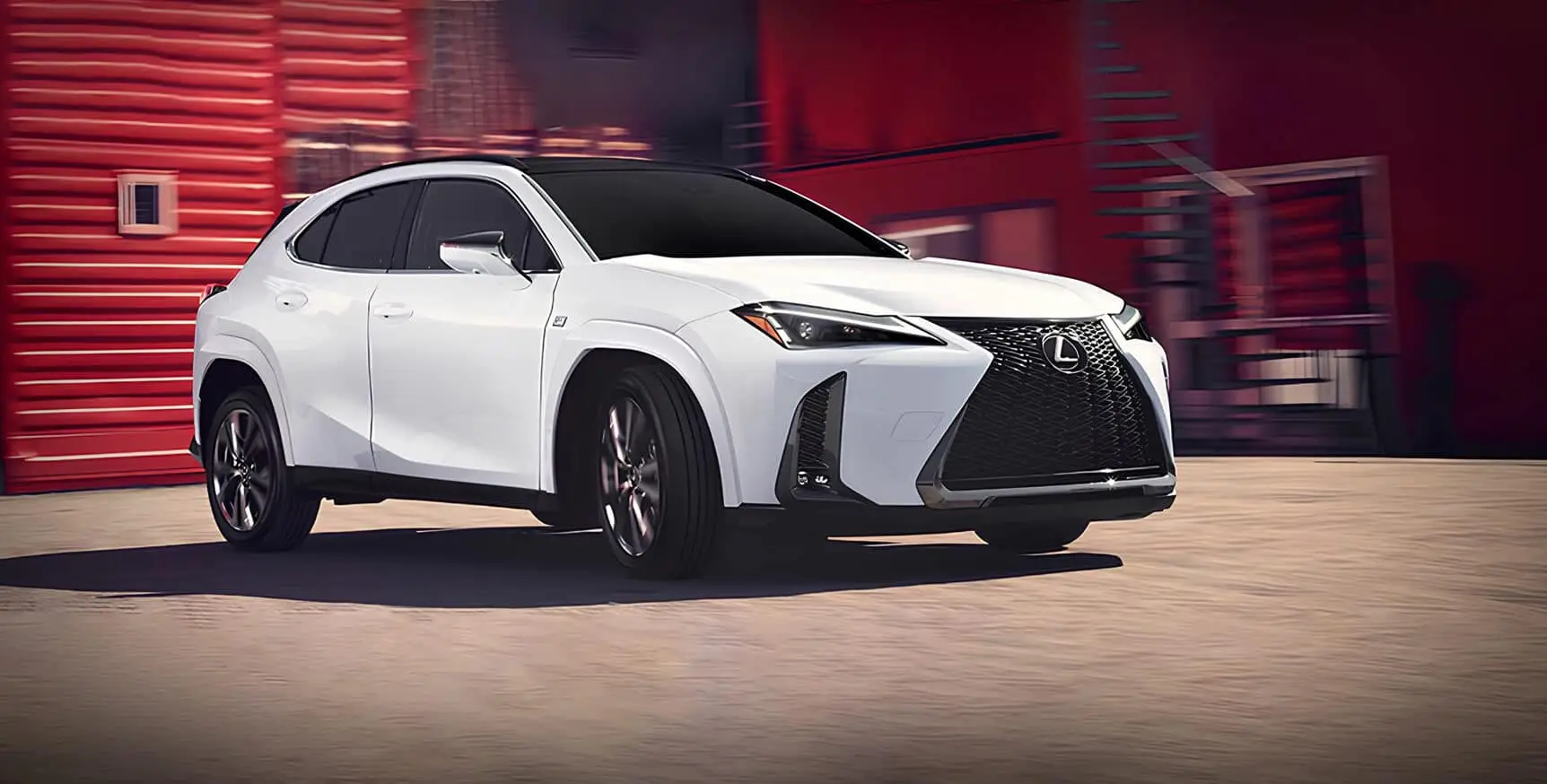
5. Lexus UX
The Lexus UX is positioned as a luxury subcompact SUV, but it feels more like a hatchback—and not a particularly roomy one at that. While it does deliver premium materials and a smooth drive, it comes up short in terms of usable space and smart storage. Buyers expecting the versatility of an SUV may feel let down by the UX’s very limited cargo capacity and minimal interior functionality.
The cargo area is one of the smallest in its class, with a high floor and narrow opening that makes it difficult to load anything larger than a few grocery bags. If you opt for the hybrid version, the situation worsens, as the battery eats into even more trunk space.
The rear seats don’t fold entirely flat, which further limits the usability of the available space. It’s a disappointing layout for a vehicle that’s supposed to be a gateway into the Lexus SUV family.
The cabin is similarly compact. The center console is narrow, with minimal storage beyond the cupholders and a shallow armrest bin. Door storage is slim, and the rear seat area feels cramped for adults. There’s no real innovation in how space is managed—no sliding trays, double-decker compartments, or under-seat storage.
While the UX excels in refinement and style, it doesn’t embrace the core traits that make SUVs so attractive: adaptability and space. For buyers prioritizing utility, this one may come up empty.
Also read: 10 Reliable Cars That Are Actually Fun to Drive for Daily Commuting in 2025
When it comes to SUVs, the real magic is in how they use their space, not just how big they are. The best SUVs, like the Kia Telluride, Honda Pilot, and Subaru Ascent, manage to combine thoughtful design with functional layout, offering families and adventurers alike the versatility they need.
They go beyond numbers and put smart solutions at the forefront. On the other hand, models like the Chevy Blazer, Ford Edge, and Lexus UX prove that poor layout choices and form-over-function design can leave a cabin feeling far more cramped—or empty—than it should be.
So if you’re in the market for an SUV, look past the spec sheet. Sit in the seats, test the folding mechanisms, and see where your phone and water bottle go. Clever storage and good spatial design can turn an SUV from just okay to perfect for your life. Choose smart, and you’ll feel the difference every day.

